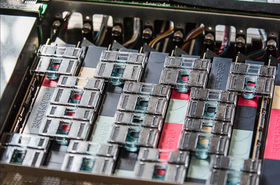UK operator EE has completed the first phase of its Shared Rural Network (SRN) coverage rollout six months ahead of schedule.
In doing so, EE becomes the first UK telco to achieve the milestone.
UK regulator Ofcom gave all four operators, including Vodafone, O2, and Three, until June 2024 to meet their individual SRN coverage targets for partial not-spot areas.
The SRN is aimed at supporting some of the UK's most remote areas and is supported by the mobile industry and government to increase all operators’ 4G coverage to 90 percent of UK landmass and their aggregate coverage to 95 percent by 2027.
It's a £1 billion ($1.27bn) partnership between the four carriers and the UK government to deliver more reliable connectivity to the country's most remote locations.
EE notes that it has extended its 4G network to more than 1,600 countryside locations across the UK.
The second phase of the SRN is due to be completed in 2027 and will develop new-shared masts to bring 4G connectivity to areas with no existing mobile service.
EE claims that its mobile coverage and Internet service reaches 99 percent of the population and 88 percent of the UK’s entire landmass.
Since carrying out SRN upgrades, it has grown its 4G geographic coverage in each country to; England (94 percent), Northern Ireland (89 percent), Scotland (87 percent), and Wales (86 percent).
Greg McCall, chief networks officer at BT, called the progress a "major milestone."
“Even though we have met our Shared Rural Network commitments months ahead of time, we will continue to focus on enhancing mobile connectivity in areas without any existing coverage to ensure everyone - residents, tourists, local businesses, and the emergency services - have the connectivity they need to thrive in the years ahead," he said.
EE, like many mobile operators, is currently in the process of retiring its 3G network, which is due to be fully switched off in March.
McCall told DCD last year that the operator will begin decommissioning its 3G network from the first quarter of this year, to instead focus on driving 4G and 5G coverage






